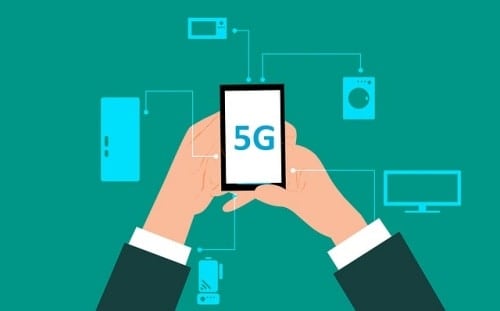5G is being positioned as a “network of networks” that will encompass public and private components, licensed and unlicensed spectrum, and even expand beyond cellular, to satellite communications.
But in reality, 5G will only be one component of the enterprise vertical technology stack, said ABI Research in its new whitepaper entitled The Five Myths of 5G.
“The telco industry has somewhat designed 5G as a technology that will complement, or even replace, several other competing communication technologies. This is, in fact, built into the standard: 5G includes eMBB, Ultra-Reliable Low-Latency Communication (URLLC), and Massive Machine Type Communication (mMTC) use cases. The first use case on this list, eMBB, builds on previous cellular generations, while URLLC can enable Time Sensitive Networks (TSNs), and can replace proprietary protocols and even Industrial Ethernet,” said Stuart Carlaw, chief research officer at ABI Research.
The mMTC is positioned to unify cellular IoT technologies into one system and introduce connectivity for millions of different types of IoT devices. In theory and according to its specification, 5G will enable connectivity that ranges from low power, low data rates, to ultra-high bandwidth and low latency, all under one system.
“From a pragmatic viewpoint, 5G will be another component in a patchwork of communication technologies and will certainly add unique value. However, it will not be the ‘network of networks’ the telco industry is currently discussing,” said Carlaw.
5G might miss the boat of the enterprise digitisation wave
Enterprise verticals—just like the telco industry—have their own established supply chains and families of communication technologies.
“Enterprise vertical end users prefer “function over form,” focusing on practical requirements, rather than insisting on standardised technologies. It is true that 5G can introduce a more cost-effective base (especially for chipsets and devices), but this will only materialise when enterprise verticals establish a critical mass for 5G and, in turn, economies of scale,” Carlow said.
ABI Research sees this may not happen, especially in the first 5 years of 5G, when the telco supply chain adapts to the requirements of enterprise verticals. This may also mean that 5G will miss the enterprise digitisation wave that is currently sweeping many markets, especially if the telco community does not act immediately. Telco operators and the infrastructure supply chain must build enterprise vertical expertise and partner with specialists when it is not necessary to organically grow this expertise internally.
“5G will only be one component of the enterprise vertical technology stack, and larger than connectivity only if the telco value chain builds expertise for each vertical separately,” Carlaw said.



